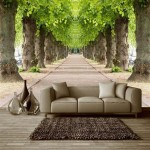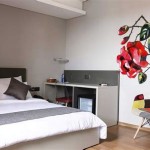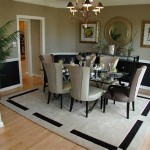The Art of Minimalist House Decor: A Guide to Embracing Simplicity and Serenity
Minimalism, an aesthetic movement characterized by simplicity, functionality, and a focus on essential elements, has gained immense popularity in the world of interior design. Stripping down to the bare necessities and embracing negative space, minimalist decor creates a calming and uncluttered living environment that promotes tranquility and well-being.
Adopting minimalist house decor requires a shift in mindset, prioritizing quality over quantity and embracing the idea that less is truly more. Here are some essential aspects to consider when pursuing a minimalist aesthetic in your home:
Decluttering and Organization
Decluttering forms the foundation of minimalist living. Remove any unnecessary items or belongings that do not serve a purpose or bring you joy. Sort through possessions and donate, recycle, or dispose of anything that doesn't align with your minimalist values. Implement smart storage solutions to keep clutter at bay, utilizing drawers, organizers, and vertical storage to maximize space and maintain order.
Neutral Color Palette
Minimalist interiors typically employ a neutral color palette, such as white, gray, beige, and black. These hues create a cohesive and calming foundation for the space, allowing furniture pieces and artwork to take center stage. Accent colors can be sparingly used to add character and create focal points, but the overall aesthetic should remain restrained and uncluttered.
Natural Materials
Minimalist decor often incorporates natural materials, such as wood, stone, metal, and glass. These elements bring a sense of warmth and organic beauty to the space, creating a connection with nature. Wood, for instance, adds texture and warmth, while metal accents provide industrial chic and a touch of sophistication.
Clean Lines and Geometric Shapes
Minimalist interiors are distinguished by their emphasis on clean lines and geometric shapes. Furniture pieces with sharp angles and simple silhouettes create a sense of order and balance. Circles, squares, and rectangles are commonly used to add interest and visual impact without overwhelming the space.
Furniture and Decor
Furniture in a minimalist home should be functional, comfortable, and aesthetically pleasing. Choose pieces that are made from durable materials and feature understated designs. Consider multipurpose furniture that serves multiple functions, saving space and reducing clutter. Decor items should be minimal and meaningful, serving as conversation starters or adding a personal touch to the room.
Lighting
Lighting plays a crucial role in creating a minimalist ambiance. Natural light should be maximized through windows or skylights. Artificial lighting should be balanced and even, using a combination of ambient, task, and accent lighting. Choose light fixtures that are simple in design and provide ample illumination without overpowering the space.
Plants
Plants can add life and freshness to a minimalist home while purifying the air. Choose plants with simple forms and minimal foliage, such as succulents, snake plants, or fiddle-leaf figs. Group plants together to create a focal point or place them strategically throughout the room to add a touch of greenery and improve air quality.
Conclusion
Creating a minimalist home decor is an ongoing journey that requires intentionality and a willingness to let go of unnecessary possessions. By embracing simplicity, functionality, and a neutral palette, you can create a serene and calming living space that promotes well-being and sparks joy.
:strip_icc()/af1be3_3075c14ccd2b461aaa9f8b3bc4e1c5e3_mv2-56f748ca98b44c8b861fa0a01d5bc504.jpeg?strip=all)
8 Ways To Embrace Minimalist Interior Design At Home

19 Minimalist Design Ideas For A Stylish Clutter Free Home Extra Space Storage
:max_bytes(150000):strip_icc()/ScreenShot2022-12-14at2.46.36PM-bb837b67e0884152959f525b6e426c67.png?strip=all)
25 Minimalist Decorating Ideas For A Calm And Clean Space

9 Ways To Minimalist Decor That Will Make Your Home Clutter Free

Minimalist Home Decor The Depot

30 Minimalist Living Room Ideas

Achieve Minimalistic Look Without Sacrificing Comfort Tips For Minimalist Decor Hindustan Times

40 Minimalist Home Decor Ideas For Your Living Room And Bedroom

19 Minimalist Design Ideas For A Stylish Clutter Free Home Extra Space Storage

11 Minimalist Home Design Tips And Ideas Designcafe







